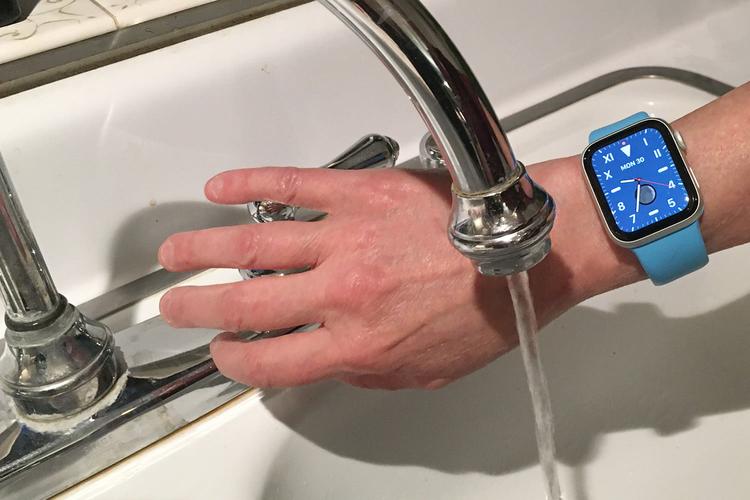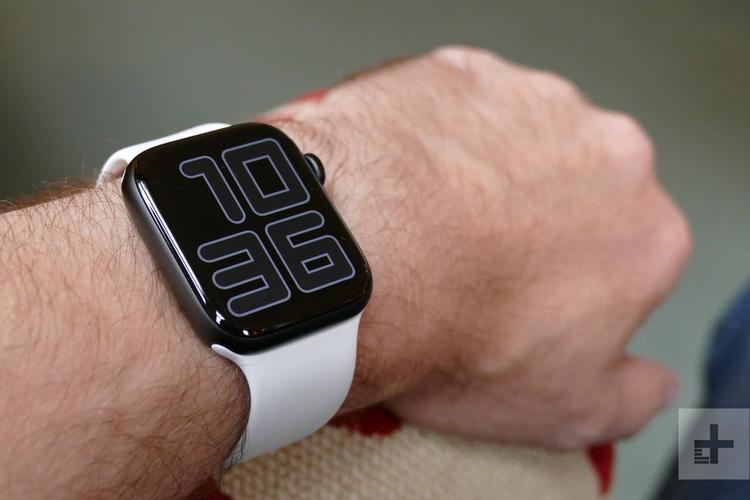
By cuterose
Smartwatch water resistance: The technology demystified
Are you the kind of person who removes their watch before doing the dishes or washing your hands? If so, that’s because old habits are hard to break. Today, the vast majority of smartwatches are built with some degree of water resistance, so that relatively benign contact with moisture will not be fatal to your expensive timepiece. Here are the ratings and specifications you should look for, whether you wear your watch while operating a gardening hose or scuba diving.
ContentsWater-resistant versus waterproof
A water-resistant product is not waterproof, and right now, there is no such thing as a waterproof watch. Water-resistant is the lowest level of protection, meaning that the item is designed to make it difficult — but not impossible — for water to seep through. Waterproof means the item is impervious to water, no matter how long it is submerged. A watch may also be advertised as “sweatproof,” but that is another measure entirely, as sweat has corrosive chemistry — water, uric acid, sodium chloride, and lactic acid — that is much more damaging to electronic equipment than plain water.
For smartwatches, waterproof actually means water-resistant as specified by the manufacturer under certain test conditions. Water resistance is measured by Ingress Protection / International Protection (IP) or atmosphere (ATM) ratings. It’s generally either one or the other for any given item.
Water resistance is not permanent and can diminish over time and under certain conditions. Dropping your watch so that it absorbs impact is generally bad for repelling water over time. The same goes for exposure to substances like soap, solvents, sunscreen, hand lotions, and insect repellants and wearing your watch in a sauna or steam room.
If you’re shopping for a smartwatch or fitness tracker for use while freestyle swimming, make sure to check the company website and read the manual. That’s where you’ll find all relevant use parameters for the product. Search for “water-resistant” in the documentation to jump right to the critical fine print. Ignore the marketing, ad copy, and especially any images associated with the product’s use around water, as it can all be misleading.
IP rating
The IP rating is defined as the water and dust resistance for electronics. This rating is published by the International Electrotechnical Commission (IEC) — an equivalent European standard is EN 60529. A rating of IP followed by X and a number means the item has been tested in water only. IP followed by two numbers means testing has been completed for dust/dirt resistance (first number) and water resistance (second number). In addition, these devices are rated IP68, a device rating standard outlined by the IEC. IP68 devices, for example, are dustproof and shielded from continuous water immersion. When IP is followed by both a number and an X, that means it’s been tested for dust resistance only, not for water resistance. Here’s the breakdown to make it clearer:

A separate Dive rating complies with EN13319 and allows for splashes, rain, showering, swimming, and diving into water, as well as snorkeling, high-speed water sports, and scuba diving.
ATM rating
ATM ratings are somewhat more popular for smaller wearables like smartwatches and fitness trackers, though these can use IP ratings, too, which used to be primarily for larger items such as headphones, smartphones, and speakers. A measure of 1 ATM equals the normal pressure at sea level. Atmospheres map to pressure testing measurements, which are then translated into water depth to determine how much the device can take. For example, a smartwatch that carries a 5 ATM rating means it can withstand depth pressure of 50 meters. Water pressure can vary, particularly when swimming, so a smartwatch or fitness tracker can carry an ATM rating but still not be safe for immersion in water. Devices with a 1 ATM or 3 ATM rating should not be used for swimming.
MIL-STD-810G rugged ratings
The most common standard for rugged devices is MIL-STD-810G, an overarching classification with many durability subcategories, like protection against drops and impact. This standard relies on a battery of tests that simulate environmental conditions like shock and vibration. For example, the MIL-STD-810G’s shock test requires 26 drops across five devices onto 2 inches of plywood over concrete. While product manufacturers must meet those specifications to sell to the military, consumer products like smartwatches can tailor or abbreviate the tests they perform. For non-military purposes, the standard describes 28 variable tests that engineers and designers can tailor and select to “generate the most relevant test data possible.”Here are just a few examples.
Apple Watch
Apple gives a specific lowdown on the water resistance features of all of its watch models. The first-generation Apple Watch had a water resistance rating of IPX7 under IEC standard 60529. Apple Watch Series 2 and later have a water resistance rating of 50 meters under ISO standard 22810:2010.
Classic Buckle, Leather Loop, Modern Buckle, Milanese, and Link Bracelet Bands are not water-resistant. You can wear your watch while exercising, washing your hands, or walking in the rain. Series 2 or later is OK for shallow water swimming in a pool or ocean, but not for scuba diving, water skiing, or other activities involving high-velocity water or deep submersion. If it touches anything that’s not fresh water, Apple says the watch should be cleaned with fresh water and dried with a lint-free cloth.
Samsung Galaxy Watch
According to Samsung, the Galaxy Watch passed military specification MIL-STD-810G testing against 10 specific conditions, including drops from 4.9 feet, extreme temperatures, dust, shock/vibration, and low pressure/high altitude. The Galaxy Watches are also water-resistant up to 50 meters per ISO standard 22810:2010. They are not intended for scuba diving. Samsung warns buyers to avoid excessive, sudden temperature changes and high-velocity activities. The remedy for watches connecting with anything but fresh water is similar to Apple’s solution of rinsing in fresh water and drying after use in seawater or chlorinated water.
Garmin
Garmin makes a variety of sports watches with a wide range of specifications. The Descent Mk1 ratings are 10 ATM and Dive (designed to comply with EN13319), which means that you can go scuba diving with this watch. The Garmin Swim 2 is rated 5 ATM, while the Fenix 6S Pro is rated 10 ATM and can measure your underwater wrist-based heart rate. The Vivoactive 4 series has a 5 ATM rating.
Bottom line
Getting the best performance from your smartwatch — and keeping it safe in the process — means knowing what you intend to use it for and making sure that the product is up to the task. When you’re buying a smartwatch, do not rely on ratings or marketing copy, because the meanings of ratings can vary according to what the manufacturer tests and the testing protocols. Instead, go by the manufacturer’s product guidelines of what kind of immersion the product can withstand.
Assume that any waterproof claim is limited to less than 1 meter (3 feet) unless otherwise stated. Also assume that buttons, ports, and dials cannot be used while the device is exposed to water. In all other instances where you don’t know for sure, use your common sense to protect your valuable device, and err on the side of caution. If an activity sounds dangerous to your device, it probably is.
Don’t forget about your watch band. Metal or leather in water is a definite no-no, but silicone or nylon sport bands should stand up to water just fine. While manufacturers test under lab conditions, the real world often presents tougher challenges to your smartwatch, and no device will stand up to abuse, regardless of how rugged it is.









